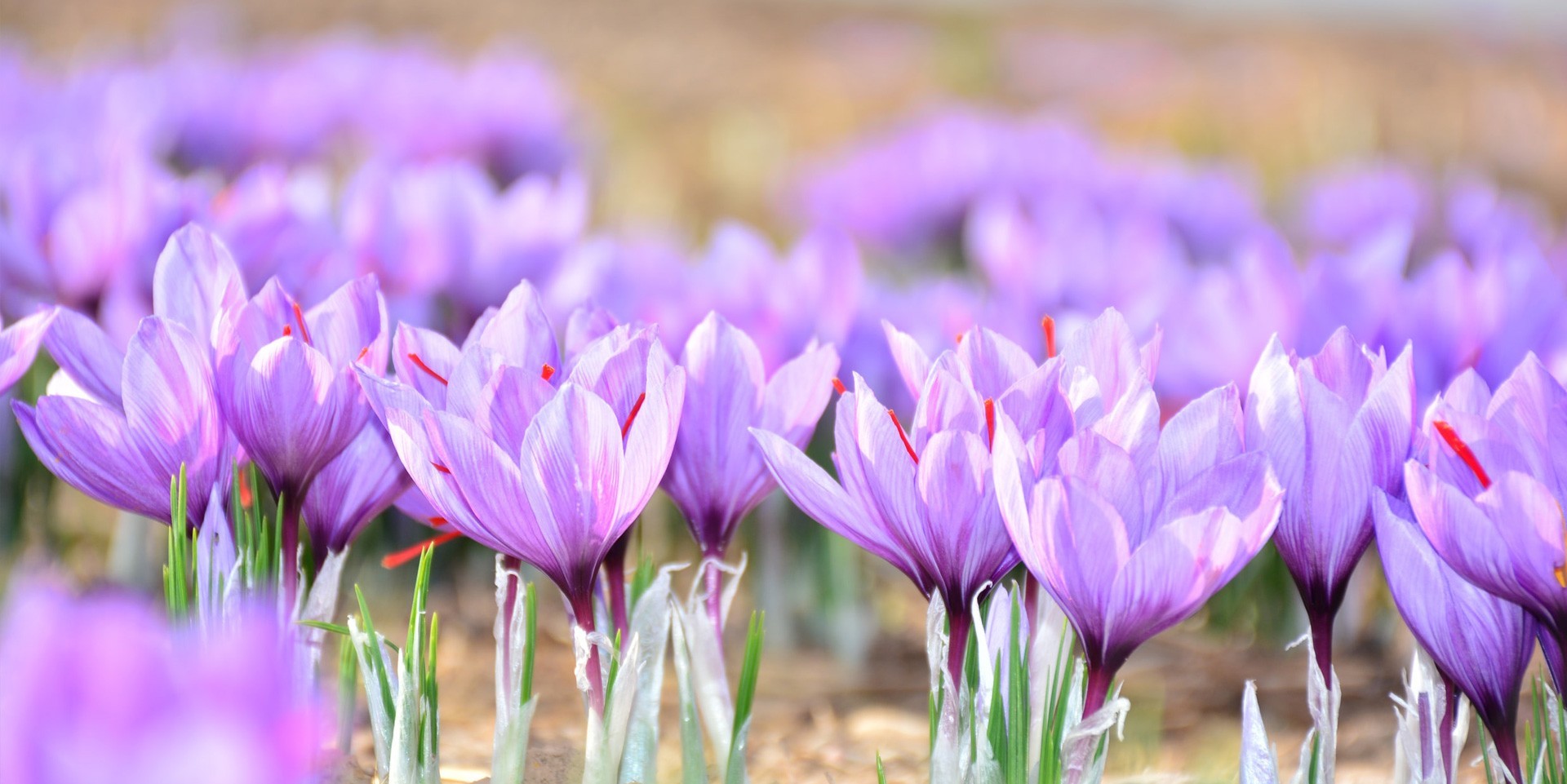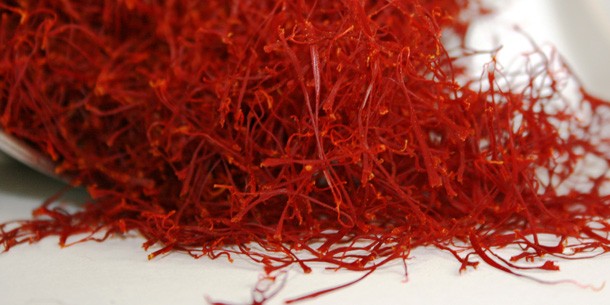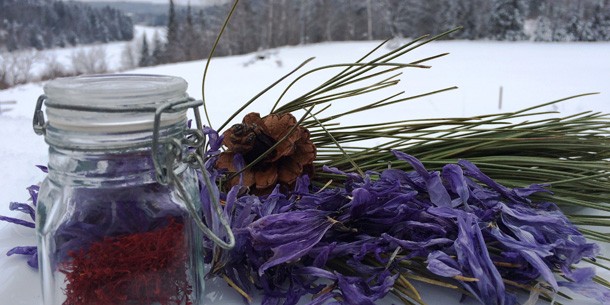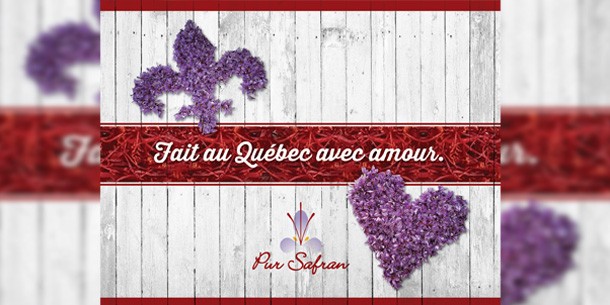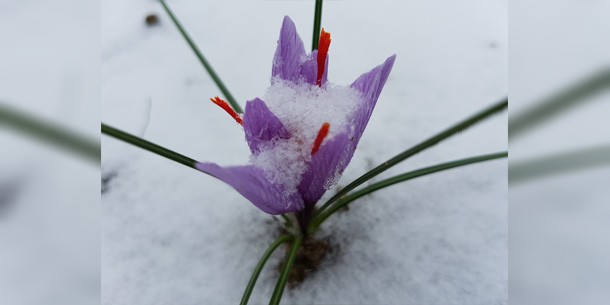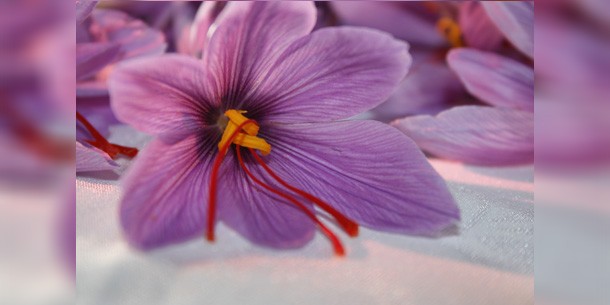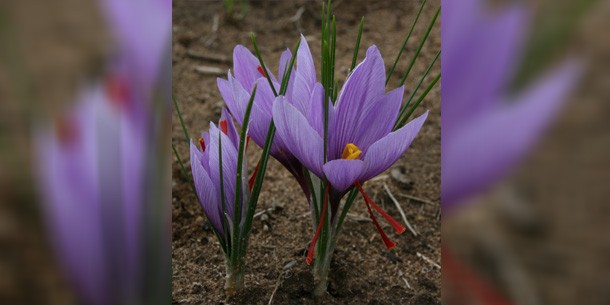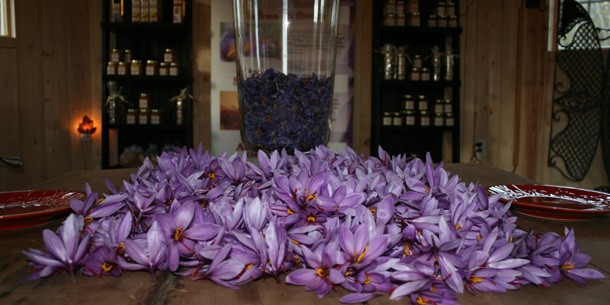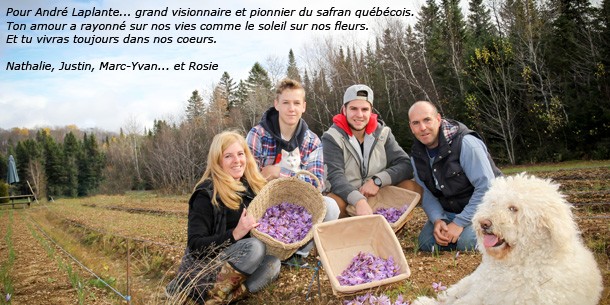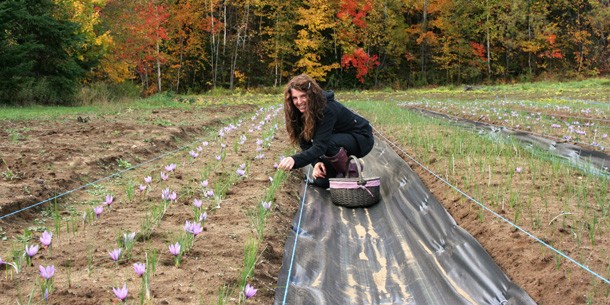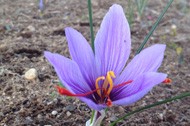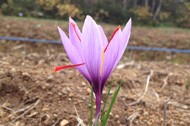A Flower Without Borders
A mythical flower, precious, fragile, known since ancient times. It symbolizes beauty and wisdom, taste and health, fragrance and elegance, subtlety and intelligence. Revered in ancient civilizations and considered a divine plant, saffron was used as an aroma as well as a dye, medicine and perfume. In clothing, saffron embodied celestial power and hierarchy.
Rich in 6000 years of history and its journey in time throughout the world, precious saffron reached Quebec in 2012, crossing the Atlantic from France, in a trip dotted with pitfalls and hope. Welcomed “on trial”, it was able to meet the challenge of acclimatization and impress itself upon growers as a way forward. The first commercial saffron plant in Canada was established in St-Élie-de-Caxton in the summer of 2013. In 2015, the saffron farm moved to Notre-Dame de Montauban and in November 2018, following the death of its co-founder, Pur Safran became the property of Vivianne Martel who relocated it with her own saffron farm in Ste-Christine d’Auvergne.
History
Saffron is one of the oldest spices on Earth, which explains the mystery surrounding its origin. According to recent botanical research, it originated in Crete and not Kashmir, as was once claimed. Saffron does not exist in the wild. It has sterile pollen and therefore does not produce seeds. It is cultivated and multiplied only by its bulbs. According to botanical research, it is the result of a selection of Crocus Cartwrightianus, by producers who wanted longer stigmas. DNA analysis of Crocus Sativus confirms that Crocus Cartwrightianus is saffron’s most likely ancestor. It is believed to have been grown first in Greece and the hypertrophy generated during the crossbreeding at the time rendered the saffron sterile. But it was the Persians who would be at the origin of the first exports of saffron, introducing it to the countries of the ancient world, teaching its culture and properties to many peoples.
The oldest remnants of saffron can be found at the site of Akrokiri, on the Greek island of Santorini, in frescoes where small tufts of saffron picked by women can be seen. These frescoes are the first botanically accurate representations of the plant which were covered, and therefore protected, by volcanic ash from explosions on the island, dating between 1650-1500 BC.
The earliest mention of saffron used in the kitchen is Persian, dating back more than 5000 years to the era of Zohac when King Zohac’s cook allegedly used it to season the back of a calf along with old wine and rosewater.
The word ’saffron’ originates from the Arabic word ‘Asfar’ meaning ‘yellow’, and the word ‘zaferân’ which is the name of the spice in Arabic alluding to the golden color obtained by the vegetable dye that is extracted from it. This etymology is found in several languages – German (saffran), English (saffron), Spanish (azafran), Finnish (saframi), Italian (zafferano) – and Latin which inspired the French term used today – Safran.
The botanical name for ‘crocus’ is derived from the Latin transcription of the Greek word ‘krokos’, which means ‘thread’ or ‘filament’, originally referring to the plant’s long, thin stigmas. Krokos is also the name of a village in Macedonia, Greece where saffron cultivation still occupies hundreds of hectares to this day.
Flower of Legends - Mythology
The most well-known legend comes from Greek mythology, where Crocos is portrayed as a handsome young man madly in love with the inaccessible nymph Smilax who was charmed by the nymph and then rejected after she got tired of him. In response to Crocos’ insistence, Smilax bewitched him and turned him into a flower, condemning him to the ground, to contemplate her without ever being able to join her.
According to another legend, Crocos died, accidentally hit in the head by his friend Hermes while the two friends were playing the discus throw on Olympus. Three drops of blood would have poured from his wound and entered the earth, fertilizing her. At this very spot appeared a beautiful purple flower with blood-red pistil, formed of three stigmas. Since that tragic day, the saffron flower, named after him, has become the symbol of life and resurrection. His beloved Smilax, overwhelmed with grief, would then have turned into a flower, the Smilax aspera, commonly called the salseparilla.
A legend also tells of Alexander the Great’s intended conquest of the east whereby the mysterious appearance of saffron flowers covered the ground overnight of the camp where he had settled with his army. For fear of being under the influence of a spell, he put an end to his conquest and retreated with his men without fighting.
Michelangelo is said to have used saffron dye for the frescoes in the Sistine Chapel.

